Indian (Malankara) Orthodox Church
| Malankara (Indian) Orthodox Syrian Church | |
|
CATHOLICATE EMBLEM |
|
| Founder | St. Thomas the Apostle |
| Independence | Apostolic Era |
| Recognition | Oriental Orthodox |
| Primate | Catholicos Mar Baselios Mar Thoma Didymos I |
| Headquarters | Kottayam, Kerala |
| Territory | India |
| Possessions | United Arab Emirates, United States, Canada, Great Britain, Ireland, South Africa, Kuwait, Malaysia, New Zealand, Germany, Switzerland, Oman,Qatar, Bahrain, Singapore and Australia, |
| Language | Malayalam, Syriac, English, Hindi |
| Adherents | 1,000,000 |
| Website | Malankara Orthodox Syrian Church |
The Malankara Orthodox Syrian Church (also known as the Malankara Orthodox Church, Orthodox Church of the East, Orthodox Syrian Church of the East,The Indian Orthodox Church) is an autocephalous church and a member of the Oriental Orthodox Church family in Christianity, founded by St. Thomas, the Disciple of Christ in A.D. 52.
Official name of the Church
The official name of the church is Malankara Orthodox Syrian Church or Orthodox Syrian Church of the East.
Hierarchy, distribution and doctrine

The spiritual regional head of the Malankara Orthodox Syrian Church is the Catholicos of the East and Malankara Metropolitan . The Church has dioceses and churches in most parts of India as well as in the United States, Canada, United Kingdom, Western Europe, Persian Gulf nations, Malaysia, Singapore, Australia and New Zealand. The official title of the head of the Church is the "Catholicos of the East and the Malankara Metropolitan". The present Catholicos of the East and Malankara Metropolitan is Baselios Marthoma Didymos I, who was enthroned on October 31, 2005, at Parumala Church by the Holy Synod amidst the Holy Eucharist.
The Church has attempted to keep the traditional oriental Orthodox faith and liturgy. It accepts the first three Ecumenical Synods. The Church suffered persecution from Western European colonial forces after Vasco da Gama arrrived in Kerala son in 1498. Used in the service is the translation of the liturgy adopted from the Syriac Orthodox Church of Antioch since their relationship started in 17th century. It had an earlier relationship with the Churches of Edessa, Tigris and Selucia and these Churches sent bishops to look after the spiritual needs of Malankara church. Today the Church uses liturgy in Syriac, Malayalam, Hindi, and English.
The sub culture of Indian Orthodox community is a part of the Indian culture, which is formulated by the continuous interaction of Christian faith and South Indian civilization in the last 20 centuries which differs significantly from western Christian culture.
The Church has theological seminaries at Kottayam and Nagpur.
History
| Part of a series on Christianity in India |
||
 |
||
| Background | ||
|---|---|---|
|
Christianity |
||
| Events | ||
|
Synod of Diamper |
||
| People | ||
|
St Thomas |
||
| Churches | ||
|
Andhra Evangelical Lutheran Church |
||
|
||
During the later Old Testament times the Malabar Coast had trade relations with West Asia. These trade routes later enabled Christianity to reach Kerala, a state on the south western coast of India. Tradition states that the Apostle Thomas preached the Gospel to the locals (which included Jewish settlers in Kerala), baptized many, and founded seven and a half churches churches[1]. The churches are as below:
- Niranam
- Palayoor(Currently Arthat Church, Kunnamkulam)
- Nilackal
- Kottakavu
- Gokkamangalam(No one knows where this is now)
- Kollam(This was destroyed by sea before two centuries)
- Maliyankara
- Thiruvancode(This is called half church(arapalli in malayalam)The name is having a controversy.
Three of them still exist.
The Christians of this ancient tradition were and are known as either Nasranis or Syrian Christians.
The Christian Community of Kerala (India) traces back its origin to the advent of St. Thomas, the Apostle to India, who reached the Cragnanore Port in AD 52 and its subsequent spiritual stabilization and growth.
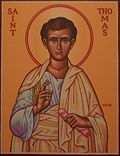
It is believed that the Apostle started his gospel mission in India, from a small town called "Maliyankara" on the sea coast of 'Paravur' Taluk in Kerala, at a short distance away from Cranganore Port. From such small beginnings, the Christian Community of Kerala grew to its present stature against heavy odds aided, among other providential factors, by the continued tolerance and hospitality of many a neighborhood, the goodwill of the local rulers, chieftains and others.
The Portuguese who colonized India in AD 1498 tried to convert the St. Thomas Christians to western Catholicism. By AD 1599 Goan Arch Bishop Menezes succeeded in forcibly converting some to the Catholic Church.[2]
Marthoma Metrans
But in AD 1653, a section of St. Thomas Christians revolted and resolved against accepting Catholic (Latin) authority known in church history as 'Koonan Kurishu Oath or Coonen Cross Oath'.[3] The people that sought to preserve the Church's Syrian ties again appealed to the Syrian Orthodox Church for help in restoring its Episcopal succession. The Syriac Orthodox Church of Antioch responded and Mar Gregorios Abdul Jaleel, the Syrian Orthodox Patriarch of Jerusalem, came to India in AD 1665. The Archdeacon who had been declared in the meantime to be Metropolitan Mar Thoma by the laying on of hands by twelve Presbyters was now confirmed by him in his Episcopal rank, and both of them worked together to organize the church on firm footing. Mar Thoma I was followed in succession by a series of Prelates with the same name till AD 1816 when the last of them namely Mar Thoma IX came to the scene, but was soon replaced by Mar Dionysius II.
Anglican
The London Missionary Service was active in India. Bishop Norton inaugurated the first Anglican Church in Kerala at Thalavady in the house of one Itty Matthan Panickar who was till then a Syrian Orthodox Christian. This church was later known as Christian Missionary Service and after Indian Independence it became the Church of South India. Lore says that Bishop Norton was tutored in Malayalam by Itty Matthan Panickar. Later the same person tutored Bishop Benjamin Bailey in Sanskrit & Malayalam, and was presented the chair on which the Bishop sat as a gift. Later in the 19th century, exposure to the doctrines of the Church of England inspired a reform movement led by Abraham Malpan. This led to the formation of the Mar Thoma Church.
In 1912, the Catholicate of the East was revived in India. The Malankara Orthodox Church had always wanted to retain its autocephalous nature and so, appealed to Patriarch Ignatius Abdul Masih II of the Syriac Orthodox Church, who ordained Murimattathil Paulose Mar Ivanios as Baseliose Paulose, Catholicos of the East. The ceremony was held at St. Mary's Church, Niranam on 15 September 1912 with much jubiliation and joy.
Despite several schisms, the Indian Orthodox Church remains a stronghold of Oriental Orthodoxy in the The Subcontinent.
The Metropolitan Bishopric of the United States and Canada was created in 1979 with the appointment of late Bishop Dr. Thomas Mar Makarios to the new diocese. The first church of this diocese was consecrated in 1980 as the St. George Malankara Orthodox Church, located on Cedar Grove Avenue in the New Dorp Beach section of Staten Island, New York. An additional 74 parishes have been established in the United States since then.
Catholicate of the Church


The word "Catholicos" means "The General Head". It can be considered as equivalent to "Universal Bishop". There were only 3 ranks of priest-hood in the early Church; namely - Episcopos (Bishop), Priest and Deacon. By the end of the third century certain bishops of certain important cities in the Roman empire gained pre- eminence over other bishops and they came to be known as Metropolitans. The Ecumenical councils of the fourth century recognized the supreme authority of these Metropolitans. By the fifth century, the Bishops in major cities like Rome, Constantinople, Alexandria, Antioch etc. gained control over the churches in the surrounding cities. Gradually they became the heads of each independent regional church and were called Patriarch which means common father. The same rank in the Churches outside the Roman Empire was called Catholicos. There were three ancient Catholicates in the Church before the fifth century. They were the Catholicate of the East, the Catholicate of Armenia and the Catholicate of Georgia. None of these ranks and titles are the monopoly of any church. Any Apostolic and national church has the authority to declare and call its head, Catholicose, Pope, or Patriarch.
As we say that St. Peter was the first Pope of Rome, St. Thomas was the first Head or the Catholicos of India. As all other Apostles did, he also established Church in India and made a set up to continue its administration in India. This Apostolic authority existed in India throughout the centuries. The first stage of the apostolic ministry in the Malankara Church is from the time of St.Thomas, when he converted 7 Brahmin families of India to Christianity, according to a myth, and gave them priest-hood. The second stage is the period of the reign of the Archdeacons which started from the fourth century and lasted until the sixteenth century. The third stage started when the archdeacon was elevated to the position of a Bishop by the community with the name Marthoma I in 1653. Since then the head of the community was the Marthoma Metrans and later the position was developed to Malankara Metropolitan with more recognition.
In 1912, the Catholicate of east was relocated to India, and Baselios Paulose I was seated in the Honorary Apostolic Throne of St. Thomas as the Catholicos Of East.
In 1934, the Malankara Association entrusted the spiritual and temporal authority and powers of the Malankara Metropolitan to the Catholicos. This one person came to be known as Catholicos of the East and Malankara Metropolitan.
Catholicate Palace


The Headquarters of the Indian Orthodox Church, named Devalokam is located at Kottayam, in Kerala. It is the official headquarters of the Catholicos Of The East who reigns on the Honorary Throne of St. Thomas, the Apostle, and was established on 31 December 1951.
The Chapel next to the Aramana built in 1953 was primarily the efforts of the women folks of the Malankara Orthodox Church. The construction of the Holy Altar was completed on 15 August 1956.
The Catholicate Office built in 1957 was donated by Dr. Mrs Lukose in memory of her husband the renowned high court Judge Kunnukuzhiyil K.K. Lukose. On 22 April 1957 the Catholicos consecrated the building.
The new Aramana which was built in 1961 was inaugurated by the visiting Armenian Catholicos VASCAN A burial place for the interment of the Holy Fathers was constructed next to the Aramana by Baselios Ougen I Catholicos. The burial places of Baselios Geevarghese II and Baselios Ougen I were embossed with marble and made beautiful with ornate engravings. The room for tombs was widened in order to facilitate the interment of successors of the Catholicos. An auditorium and an administrative Block were also constructed close to the Aramana. The Office of the Catholicose, the Office of the Holy Synod, Kottayam Central Diocesan Office, Malankara Corporate Management Office, Sunday School Office, Malankara Sabha Magazine Office, Catholicate Press, M.O.C Publication Office etc are also at the head quarters.
The mortal remains of Baselious Geevarghese II, Baselious Augen I and Baselious Marthoma Mathews I are entombed in the Catholicate Chapel. A portion of the holy relics of St. Thomas, the Apostle of India and Founder of the Church, is also kept in the chapel.
Past Catholicos
- Mor Baselios Paulose I (1912-1914) (Catholicose of the East)
- Mor Baselios Geevarghese I (1925-1928) (Catholicose of the East)
- Mor Baselios Geevarghese II (Catholicose of the East, 1929-1964 & Malankara Metropolitan, 1934-1964)
- Mor Baselios Augen I (1964-1975) (Catholicose of the East & Malankara Metropolitan)
- Mor Baselios Mar Thoma Mathews I (1975-1991) (Catholicose of the East & Malankara Metropolitan)
- Mor Baselios Mar Thoma Mathews II (1991-2005) (Catholicose of the East & Malankara Metropolitan)
- Mor Baselios Mar Thoma Didymos I (2005-present) (Catholicose of the East & Malankara Metropolitan)
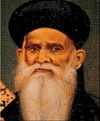

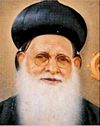
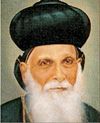
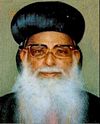
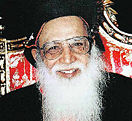
Saints of the Church
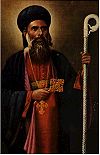

- Parumala Thirumeni (Gheevarghese Mar Gregorious) (Declared by the Holy Synod, in 1947, by Catholicos Baselios Gheevarghese II)
- Catholicos Baselios Eldho of Kothamangalam (Declared by the Holy Synod, in 1947, by Catholicos Baselios Gheevarghese II)
- Mar Dionysius VI of Vattasseril (Declared by the Holy Synod, in 2003 by Catholicos Baselios Marthoma Mathews II)
Current Metropolitans of the Church

- Baselios Mor Thoma Didymos I (Catholicose of the East and Malankara Metropolitan)
- Paulose Mor Milithios (Catholicose Designate)
- Dr. Geevarghese Mor Osthathios
- Mathews Mor Barnabas
- Mathews Mor Epiphanios
- Philipose Mor Eusebius
- Thomas Mor Athanasius
- Geevarghese Mor Ivanios
- Dr. Thomas Mor Athanasius
- Dr. Yuhanon Mor Milithios
- Kuriakose Mor Clemis
- Zachariah Mor Anthonios
- Dr. Mathews Mor Severius
- Job Mor Philoxenos
- Geevarghese Mor Coorilos
- Paulose Mor Pachomius
- Dr. Yakoob Mor Irenaeus
- Zachariah Mor Nicholovos
- Dr. Gabriel Mor Gregorios
- Dr. Zachariah Mor Theophilos
- Dr. Yuhanon Mor Chrysostomos
Theological seminaries of the Church

- Orthodox Seminary,(Old Seminary) Kottayam (Syrian Orthodox Theological Seminary, Kottayam)
- Nagpur St. Thomas Orthodox Theological Seminary (St.Thomas Theological Seminary, Nagpur)
Ecumenical relations
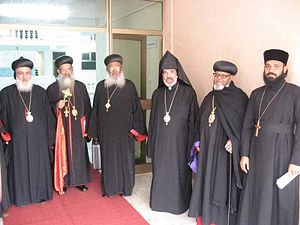
The Malankara Orthodox Syrian Church takes an active role in various ecumenical activities at national and international levels. It is a founder member of the World Council of Churches.[4] Famous theologians such as Paulos Mar Gregorios, Geevarghese Mar Osthathios, V.C. Samuel Cor-Episcopa, and Dr. K.M. George, who contributed to the negotiations between the Oriental and Byzantine churches, belong to this church. The Indian Orthodox Church also participated in the Ecumenical Council of Oriental Orthodox Churches held in Addis Ababa, in AD 1965.
- International Ecumenical Organisations
World Council of Churches One of the founder members of this world-wide ecumenical body, the Malankara Orthodox Church has been an active participant in all its projects and programmes. Its members have held distinguished positions (Sara Chacko, the Metropolitan Dr. Paulos Mar Gregorios were its presidents) and at present the Church is represented in its Central Committee by Dr. K.M. George, the Principal of the Orthodox Theological Seminary. Dr. John Mathews, Professor of Biblical Studies at the Orthodox Theological Seminary serves as a member of the WCC's Committee on Education and Ecumenical Formation. Faith and Order Commission One of the early programmes that aimed at bringing the churches into closer unity, the Church's presence in well represented by Dr. V.P.Varghese, Professor of Liturgical Theology, Orthodox Theological Seminary.
Christian Conference of Asia This is an international ecumenical organization that has come into existence to enable the churches in Asia to work in unity and forge better fraternal relations. The Malankara Orthodox Church has been a significant partner in working towards the objectives of this organization, with Dr. Yakoob Mar Ireneus being its current representative. Further, Susan Jacob is a member of its Executive Committee, while Philip Kuruvilla has joined its staff as the Secretary of the CCA's HlV/AlDS Programme and has been instrumental in disseminating information and awareness among the members of its constituent churches.
Global Christian Forum The fact that many evangelical, Pentecostal and charismatic Christian groups as well as the Catholic Church, are not represented in the WCC has led to the move to form an ecumenical body that would be truly universal in its reach. Under the aegis of the WCC, an unofficial organization labeled the Global Christian Forum, which involved practically all, and every Christian organization in the world. Dr. John Mathews has represented the Church at its nascent ecumenical organization.
- Inter-Church Relations
- National and Regional Christian Councils
Monasteries of the Church
- Vallikkattu Dayara, Vakathanam
- St.Thomas Dayara, Bhilai
- Mount Tabor Dayara, Pathanapuram
- Mar Kuriakose Dayara, Pampady
- Mount Horeb Sasthamcotta (Tomb of Baselious Marthoma Mathews II)
- Bethany Ashram, Perunad
- Christushishiya Ashram (Thadakam), Coimbatore
- Mar Kuriakose Ashram, Mylapra
- Mar Basil Dayara, Pathanamthitta
- St. George Dayara, Othara
- St. Pauls Ashram, Puthuppady
- Bethlehem Ashram, Chengamanad
- Chayalode Ashram, Pathanmthitta
- Holy Trinity Ashram, Ranni
- Mar Baselios Ashram, Njaliakuzhy
- Bethel Ashram, Kuttikonam
- Calvary Ashram, Pattazhi
- St. Thomas Ashram, Sooranad
- Mount Carmel Ashram, Kallada
- St. Thomas Ashram, Attapadi
- St. Thomas Dayara, Vettikal
Important pilgrim centers
- St. Mary's Church, Niranam (founded by St Thomas in AD 52)
- Thiruvithancode church(founded by st. Thomas)
- Parumala Seminary, (Tomb of Geevarghese Mar Gregorios) [1][2]
- Kothamangalam Marthoman Church
- Pampady Dayara
- Pampakuda Cheriapally (St. Thomas Church)
- Relics of Julius Mar Alvares, St. Marys Orthodox Church, Panjim, Goa
- Cheppad St George Syrian Orthodox Church
- Thevalakkara Mar Abo church
- Vakathanam vallikkattu dayara
- Mulanthuruthy Marthoman Church
- Kallada valiyapalli
- Paliyekkara palli
- Puttadi kurisumala,Kumily
- Puthupally Palli[3]
- Coonan Cross Oath Memorial Holy Cross, St. George Orthodox Church Mattancherry, Ernakulam
Dioceses
- Australia
- Angamali East
- Angamali West
- Canada & Europe
- Chengannur
- Chennai
- Kolkata Orthodox Diocese
- Delhi
- Idukki
- Kandanad East
- Kandanad West
- Karingachira
- Kochi
- Kollam
- Kottayam
- Kunnamkulam
- Malabar Diocese
- Malaysia
- Mavelikara
- Mumbai
- New Zealand
- Niranam
- Sulthan Bathery
- Thumpamon
- Trivandrum
- Trichur
- United States
See also
- List of Catholicos of the East
- List of Patriarchs of Antioch - Till Chalcedon Schism
- List of Syriac Orthodox Patriarchs of Antioch - After Chalcedon
- List of Catholicoi of Armenia
- Catholicos of Georgia
Footnotes
- ↑ The Encyclopedia of Christianity By FAHLBUSCH, Erwin Fahlbusch, Geoffrey William Bromiley page 285
- ↑ The Encyclopedia of Christianity By FAHLBUSCH, Erwin Fahlbusch, Geoffrey William Bromiley page 285
- ↑ The Encyclopedia of Christianity By FAHLBUSCH, Erwin Fahlbusch, Geoffrey William Bromiley page 285
- ↑ The Encyclopedia of Christianity By FAHLBUSCH, Erwin Fahlbusch, Geoffrey William Bromiley page285
External references
- Fahlbusch, Erwin Fahlbusch, Geoffrey William Bromiley (198), The Encyclopedia of Christianity, Wm. B. Eerdmans Publishing, 2008, ISBN 080282417X,9780802824172
links
- Current website of the Indian Orthodox Church
- Complete website of the Indian Orthodox Church
- Malankara Orthodox Church Portal
- Official Malankara Orthodox Church Radio
- Official Malankara Orthodox Church TV
- Official website of Parumala Church
- Official website of Pampady Dayara
- Official website of Puthuppally Church
- Official website of Vakathanam Church
- Official website of Pallibhagam youth Movement Kudassanad
- MGOCN (Mar Gregorios Orthodox Christian Network)
- Kottayam Cheriapally
- Anglican relations
|
|||||||||||||||||||
| Autocephalous and Autonomous Churches of Oriental Orthodoxy |
| Autocephalous Churches |
| Alexandria | Antioch | Armenia | Eritrea | Ethiopia | India |
| Autonomous Churches |
| Alexandria: British Orthodox Church | French Orthodox Church
Antioch: Malankara Syriac Orthodox Church Armenia: Cilicia | Constantinople | Jerusalem |
